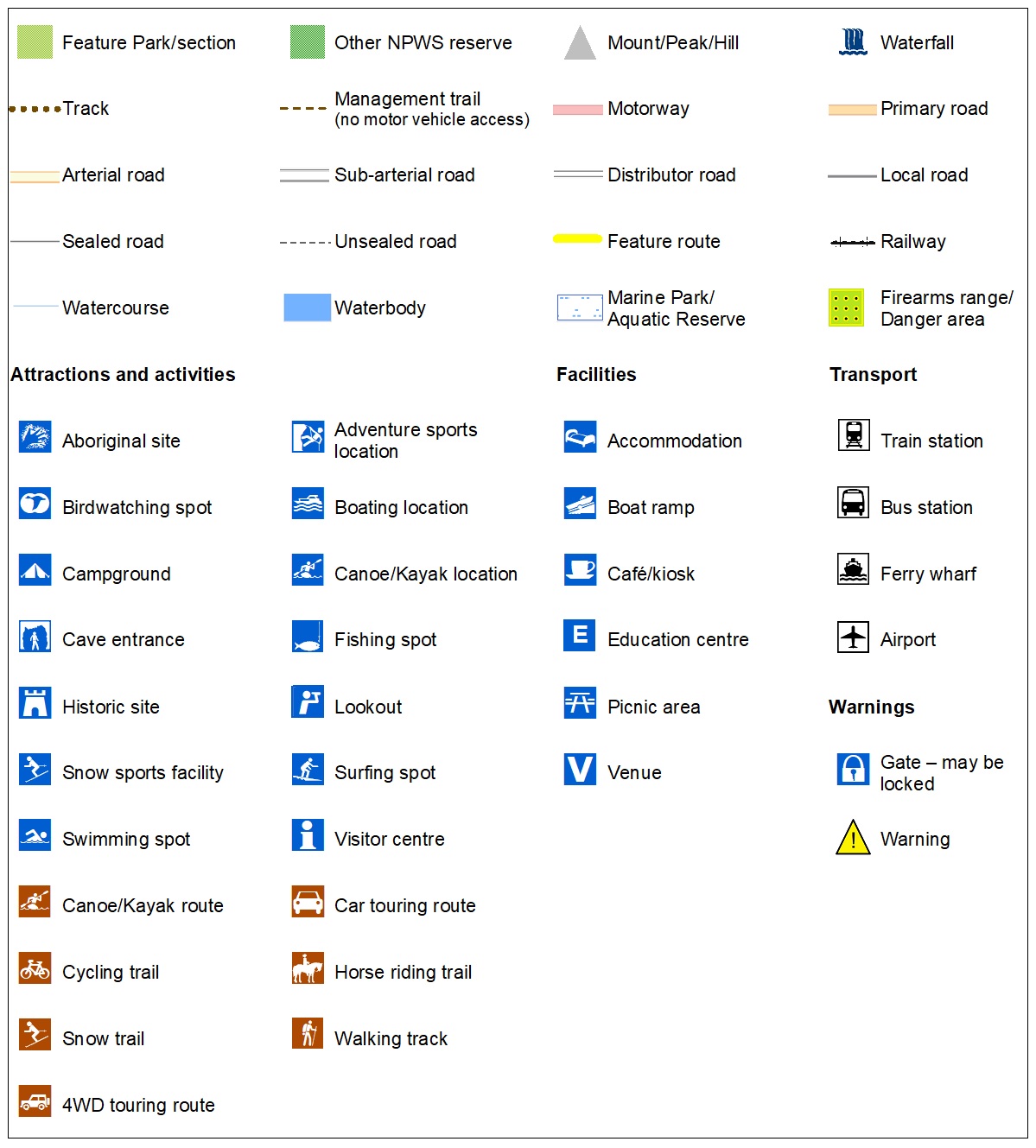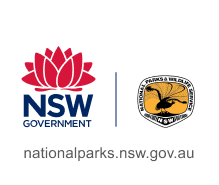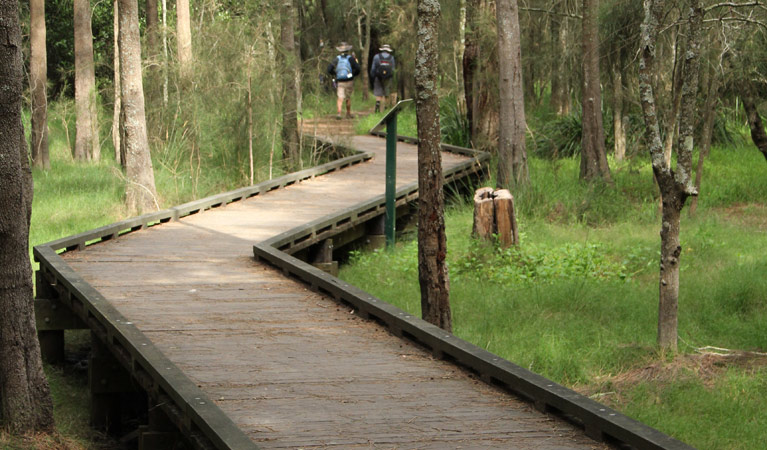Overview
Take a walk along the Place of Winds interpretive trail. It’s an easy walk along the boardwalk over salt marsh and through woodland, featuring some scenic views over the valley.
- Distance
- 1.2km one-way
- Time suggested
- 30min - 1hr
- Grade
- Grade 3
- What to
bring - Drinking water, hat, sunscreen
- Please note
- Berowra creek is susceptible to pollution. Swimming should be avoided for three days after heavy rainfall or if the water is discoloured
- Picnic facilities are available at Crosslands Reserve if you have time for a picnic or barbecue
An easy hour’s walk along the Place of Winds interpretive trail is the perfect way to start or finish a day out at Crosslands Reserve.
The easy walk takes you through mangroves, swamps and forest in quite a short space of time and there are interpretive signs along the way so you’ll be able to find out more about these varied habitats. A boardwalk takes you out over the marshes to a platform overlooking the water and along your walk you’ll see evidence of Aboriginal occupation and some scenic views of the valley.
Map

Map legend

Local alerts
For the latest updates on fires, closures and other alerts in this area, see https://www.nationalparks.nsw.gov.au/things-to-do/walking-tracks/place-of-winds-interpretive-trail/local-alerts
General enquiries
- National Parks Contact Centre
- 7am to 7pm daily
- 1300 072 757 (13000 PARKS) for the cost of a local call within Australia excluding mobiles
- parks.info@environment.nsw.gov.au
Park info
- in Berowra Valley National Park in the Sydney and surrounds region
- Berowra Valley National Park is always open but may have to close at times due to poor weather or fire danger
- Crosslands Reserve is open 8am to 7.30pm during daylight savings and 9am to 5pm the rest of the year
- Barnetts Road Reserve and the lookout is closed from sunset to sunrise
Visitor info
All the practical information you need to know about Place of Winds interpretive trail.
Track grading
Features of this track
Distance
1.2km one-way
Time
30min - 1hr
Quality of markings
Sign posted
Experience required
Some bushwalking experience recommended
Gradient
Short steep hills
Steps
Many steps
Quality of path
Formed track, some obstacles
Getting there and parking
Get driving directions
For the Place of Winds interpretive trail from Hornsby:
- Take the Pacific Highway north from Hornsby
- Turn left onto Galston Road
- Turn right onto Somerville Road
- Follow the road through the gate to the carpark at the end of the road for Crosslands Reserve
- The trackhead is 300m from the northern end of the carpark
Parking
Parking is available for the Place of Winds interpretive trail at Crosslands Reserve at the end of Somerville Road, Hornsby Heights.
Best times to visit
There are lots of great things waiting for you in Berowra Valley National Park. Here are some of the highlights.
Spring
Enjoy the spring wildflowers and take on the challenge of the Great North walk before the weather gets too warm
Summer
Swim in Berowra creek in the warmer months - remember safety precautions around waterways
Winter
Winter is generally great for bushwalking in the Sydney region but bring warm gear if youre camping - nights can be cold in the bush
Weather, temperature and rainfall
Summer temperature
Average
18°C and 28°C
Highest recorded
43.1°C
Winter temperature
Average
6°C and 18°C
Lowest recorded
-3.5°C
Rainfall
Wettest month
March
Driest month
July
The area’s highest recorded rainfall in one day
253mm
Maps and downloads
Prohibited
Pets
Pets and domestic animals (other than certified assistance animals) are not permitted. Find out which regional parks allow dog walking and see the pets in parks policy for more information.
Smoking
NSW national parks are no smoking areas.
Learn more
Place of Winds interpretive trail is in Berowra Valley National Park. Here are just some of the reasons why this park is special:
Aboriginal importance

Berowra Valley National Park is within the traditional Country of the Dharug People to the west. It contains a number of significant Aboriginal heritage sites, including artefacts, middens and campfire sites. This special area, with its land and waterways, plants and animals, features in all facets of Aboriginal culture and continues to be of great significance to Aboriginal people today.
Bush in the 'burbs

Eucalypt forests, delightful birdlife and all manner of creatures occupy this very beautiful bush valley stretching from the suburbs out towards the Hawkesbury river. While you're in the park, keep your eye out for a powerful owl, sea eagle, wedgetail, or listen for the call of a red crown toadlet.
Making tracks

Great North walk is an iconic track that stretches 250km from Sydney to Newcastle. Constructed in 1988 as part of the Australian Bicentenary, the walk takes in diverse landscapes and a lot of Australian history. Part of the walk travels through Berowra Valley National Park along the Benowie walking track.
Wonderful waterways

Berowra Creek is a hidden waterway perfect for canoeing, boating and fishing. Escape the noise and traffic of the city and come and while away a few hours in the perfect serenity of this lovely little spot. Load up your pack with sandwiches and hats and take the family for a wander along the trails or laze under a tree at Crosslands Reserve while the kids play.
Plants and animals protected in this park
Animals
-

Kookaburra (Dacelo novaeguineae)
Of the 2 species of kookaburra found in Australia, the laughing kookaburra is the best-known and the largest of the native kingfishers. With its distinctive riotous call, the laughing kookaburra is commonly heard in open woodlands and forests throughout NSW national parks, making these ideal spots for bird watching.
-

Superb lyrebird (Menura novaehollandiae)
With a complex mimicking call and an elaborate courtship dance to match, the superb lyrebird is one of the most spectacular Australian animals. A bird watching must-see, the superb lyrebird can be found in rainforests and wet woodlands across eastern NSW and Victoria.
-

Swamp wallaby (Wallabia bicolor)
The swamp wallaby, also known as the black wallaby or black pademelon, lives in the dense understorey of rainforests, woodlands and dry sclerophyll forest along eastern Australia. This unique Australian macropod has a dark black-grey coat with a distinctive light-coloured cheek stripe.
Plants
-

Old man banksia (Banksia serrata)
Hardy Australian native plants, old man banksias can be found along the coast, and in the dry sclerophyll forests and sandstone mountain ranges of NSW. With roughened bark and gnarled limbs, they produce a distinctive cylindrical yellow-green banksia flower which blossoms from summer to early autumn.

